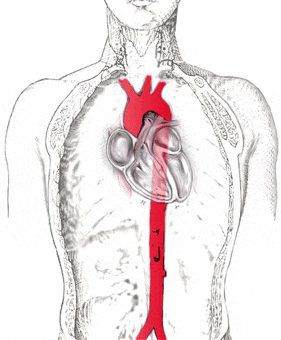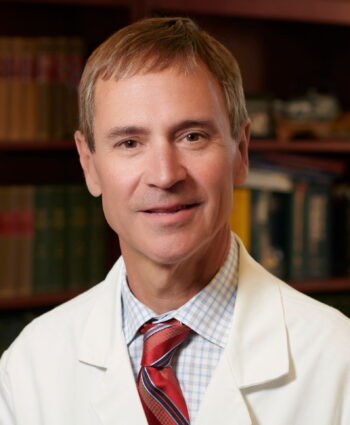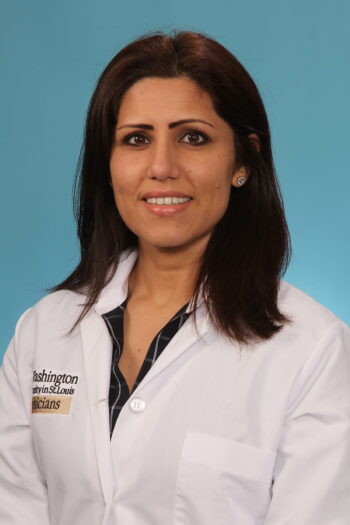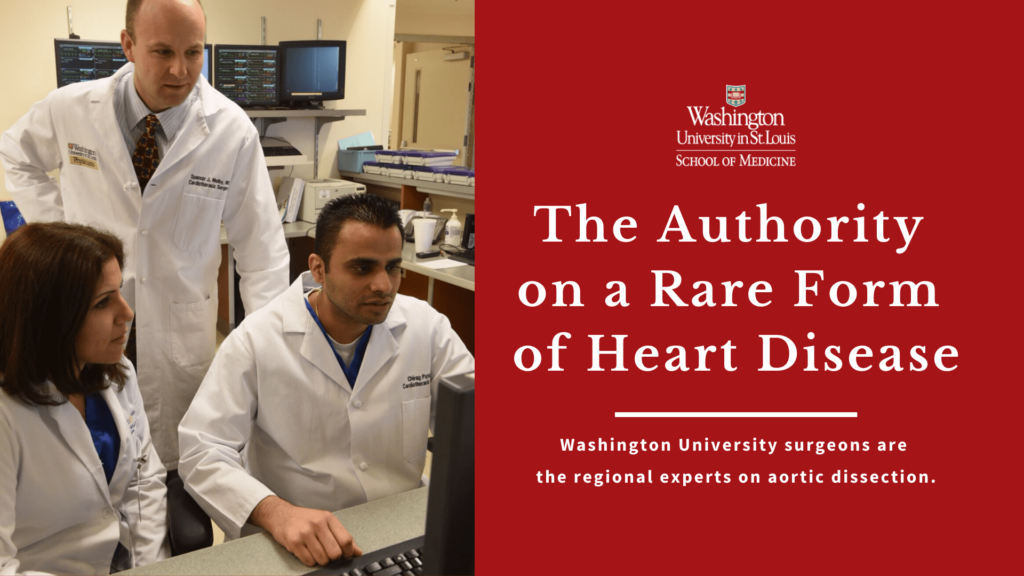A recent article in the Wall Street Journal reported that James Dimon, JPMorgan Chase & Co Chief Executive, checked himself into a New York hospital on the morning of March 5, complaining of chest pains. Dimon had a rare disease known as acute aortic dissection. While aortic dissection is uncommon, it is potentially life-threatening. Fortunately for Dimon, he received prompt diagnosis and treatment.
In the St. Louis region, there are over 100 cases of aortic dissection occur each year. The Barnes-Jewish & Washington University Heart & Vascular Center offers 24-hours-a-day, seven-days-a-week services for immediate evaluation and treatment of dissection patients. U.S. News & World Report ranks Barnes-Jewish Hospital and Washington University School of Medicine in St. Louis number one in Missouri and among the best hospitals nationwide for Cardiology & Heart Surgery.
Washington University Cardiac Surgeons Marc R. Moon, MD, and Puja Kachroo, MD, are the region’s leading authorities on acute aortic dissection.
What is aortic dissection?
The aorta is the main vessel that sends blood from the heart to the rest of the body. When blood is pumped by the heart, it travels through the aorta and into the body through connecting vessels.
A dissection occurs when the wall of the aorta tears. This tear allows blood to leak through the walls of the aorta, blocking or diverting the natural flow of circulation. The result is that vital organs do not receive the circulation they need, reducing the amount of oxygen and nutrients available to those organs. If the area of the tear ruptures, the condition is often fatal.

“The water pressure in a garden hose gets weaker when there’s a leak,” Moon says, for comparison. Moon, the Section Chief of Cardiac Surgery, is passionate about informing the public about heart health. “Some of the water is being diverted through a tear in the hose, so it’s harder for the water to travel as far. In aortic dissection, there is a similar kind of tear in the wall of that vessel. It’s more difficult for the blood to reach its destination.”
What are the symptoms?
“The patient might feel like they are having a heart attack or stroke,” Moon explains. “Chest pain is the number one symptom for aortic dissection.” Other symptoms include pain in the neck, back and abdomen, as well as numbness or weakness in the limbs.
“Aortic dissection is often fatal when missed,” Moon says, “but with proper education, physicians know what signs to look for during an examination.”
These signs include weak pulse, reduced blood flow in the extremities and blood pressure differences between the limbs. At the Heart & Vascular Center, the multi-disciplinary team of experts knows what to look for and understands that quick diagnosis of aortic dissection is key to successful outcomes.

Am I at risk?
Aortic dissection is a rare condition, affecting approximately 2000 people in the United States each year. Most patients are men between the ages of 60-80, though other factors can put a person at risk.
“The greatest risk factor is hypertension,” Kachroo says. Kachroo is an Assistant Professor in the Section of Cardiac Surgery at the School of Medicine, specializing in coronary artery bypass grafting, valve replacements and surgical treatment of aortic diseases. “According to the International Registry of Acute Aortic Dissections, high blood pressure has been associated with over 70% of patients.”
Other risk factors include related syndromes, such as Marfan or Loeys-Dietz syndrome, aortic aneurysm and family history. “There are genetic conditions that can trigger aortic dissection,” Kachroo says. “Bicuspid aortic valve is a congenital heart defect that can put patients at risk for aortic dissection.”
What is the treatment?
Immediate action is vital in the case of aortic dissection. The team at the Heart & Vascular Center diagnoses the condition, then begins treatment to control blood pressure and repair the torn aorta. The Heart & Vascular Center is the largest and only regional center that offers all diagnostic and therapeutic options for patients with aortic dissections and its associated complications.
Surgical procedures, including open aortic repair and endovascular repair, allow the surgeon to fix the tear in the aorta, returning blood to its normal circulation. Moon, Kachroo and the team of physicians at the Heart and Vascular Canter have the largest regional experience treating patients with aortic dissection and provides care with the latest techniques and devices to obtain excellent results.

Although cases like that of JP Morgan Chief Executive Dimon are rare, it is important for the public to be aware of heart disease, risk factors and the excellent quality of care offered at Washington University School of Medicine and Barnes-Jewish Hospital.
“Heart surgery is something most people don’t want to think about,” Kachroo acknowledges. “But knowing if you are at risk for heart disease is important. I would like people in the St. Louis region to know that the cardiac surgeons at the School of Medicine and Barnes-Jewish Hospital are experts at the top of their field, ready to treat even the most challenging cases with skill and care.”
